September 24, 2017
Martha O'Kennon
I temporarily retract everything positive I said about the weather last week. It has been hellishly hot and humid and that's why we don't have the huge group of photos from this past week that we usually have.
Many of the perennial plants need water, and the rain has been sparse- enough to wet the top layer of earth but not enough to help the plants much. Still a number of gorgeous vignettes appeared. Here are our usual three, left to right: The Autumn Joy sedum is now past its great prime, but still beautiful; a Burr Oak leaf changing from green to red; and the purple aster, now blooming in the front yard, now that the backyard ones are passing their prime. Did you check out the little white spot on one of the flower heads?
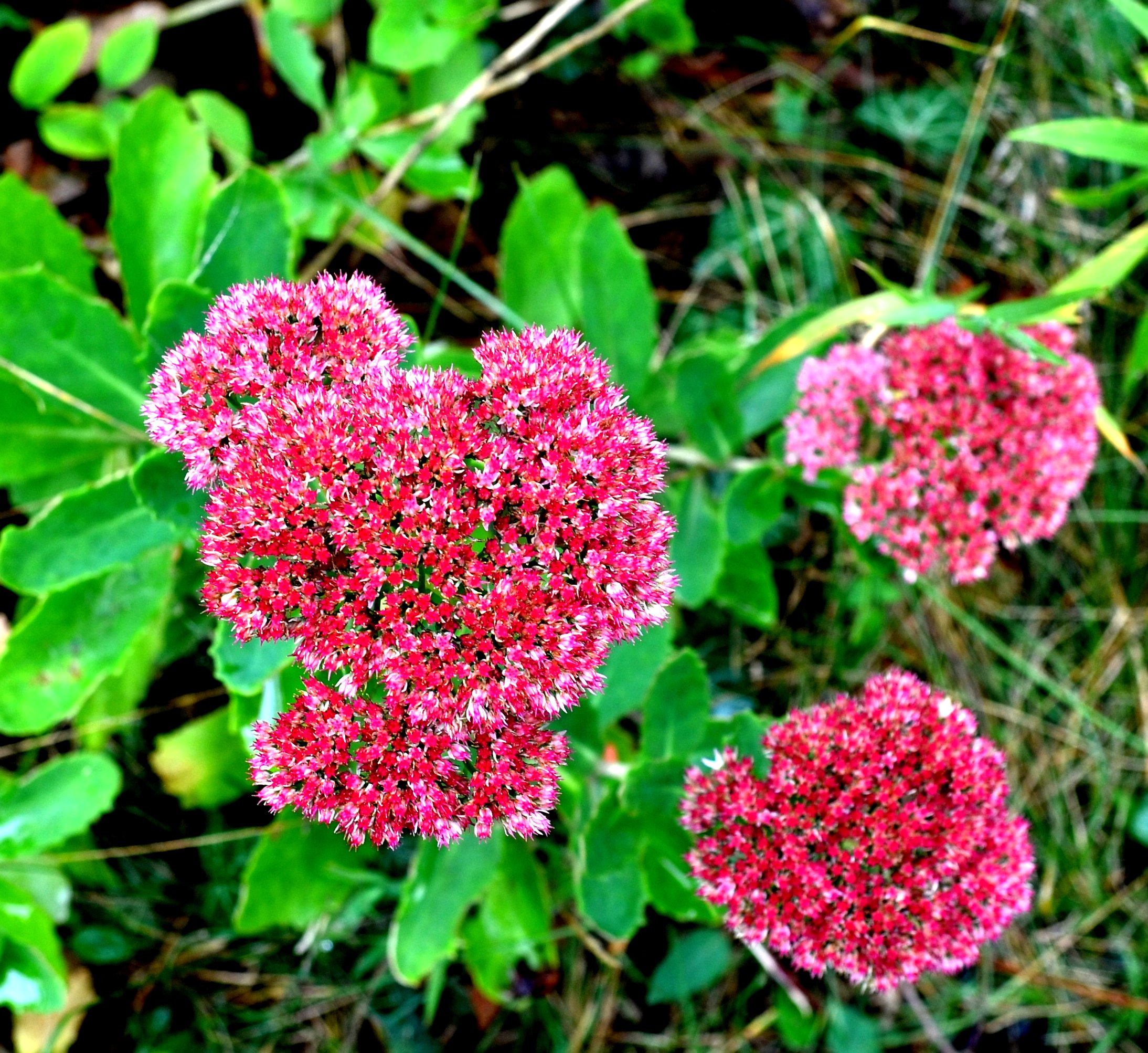
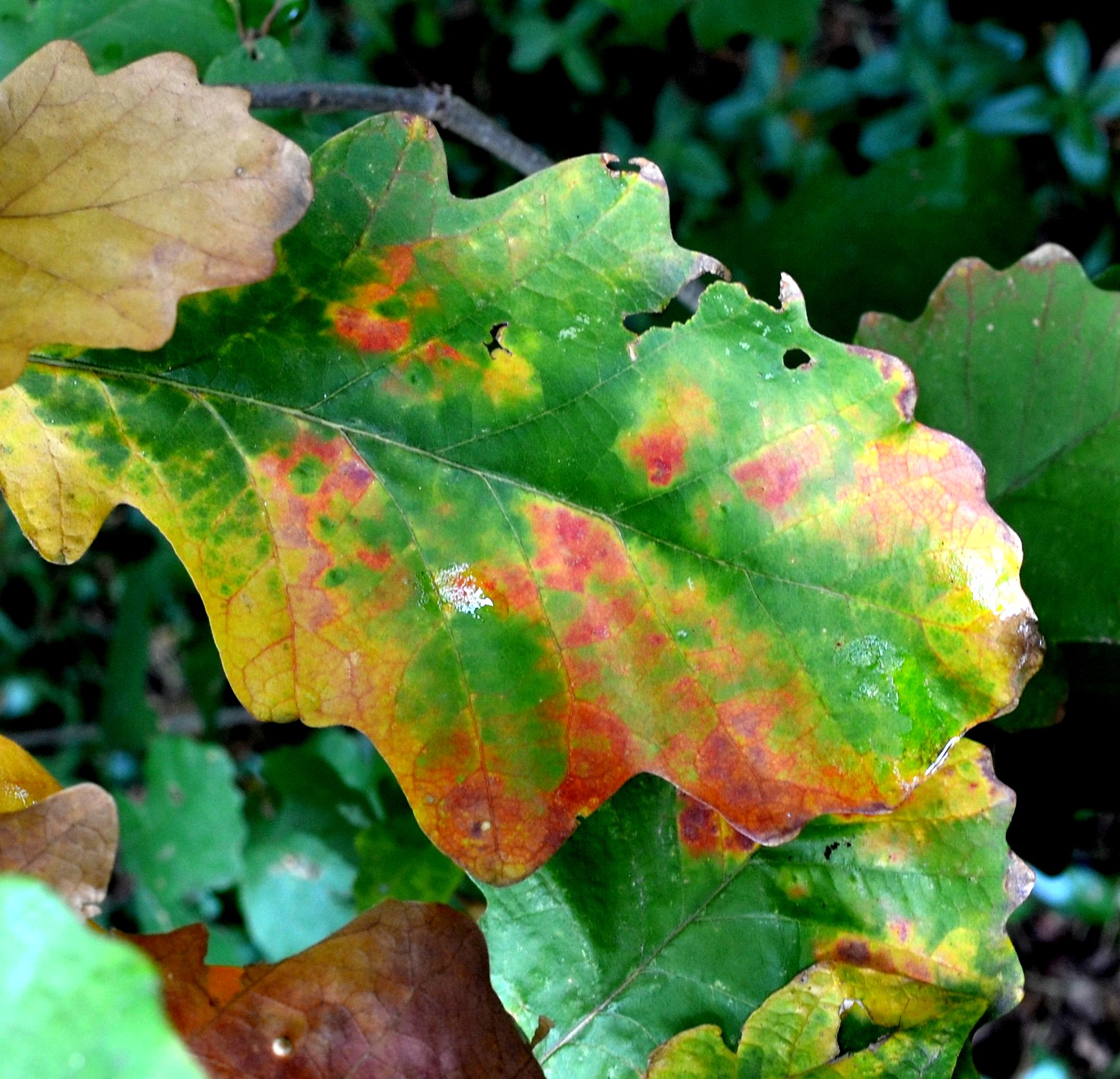
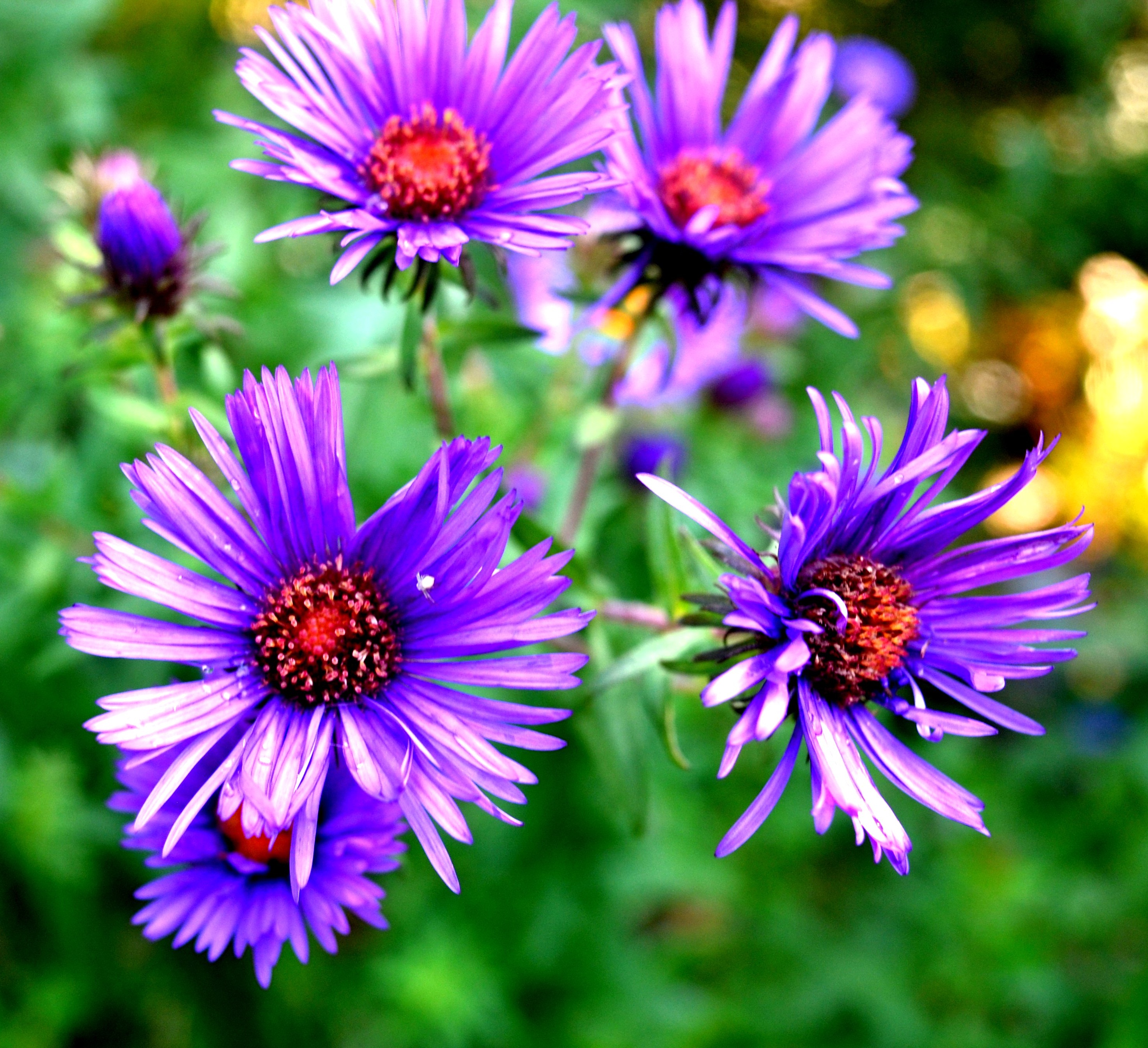
Remember that there is information in the name of the file for each image. You can see it by mousing over the image - look at the lower left of the screen. Or you can click on the image to get to the (usually) larger image. Then the info is displayed in the address line above. Sometimes the second click will actually display a different view of the original image.
Here are a tiny-ish carpenter ant, a few black aphids, and one that looks greenish to me.
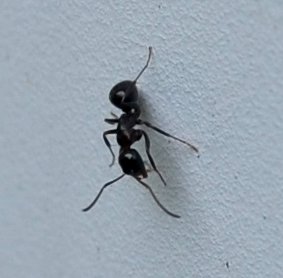
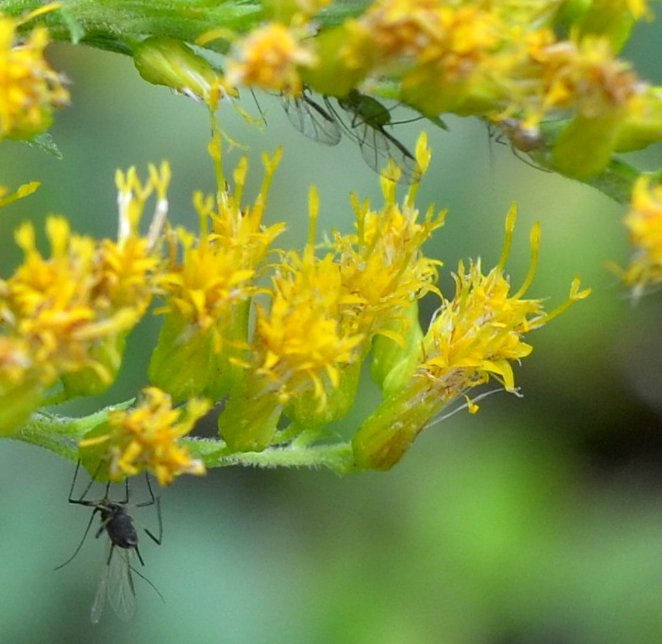
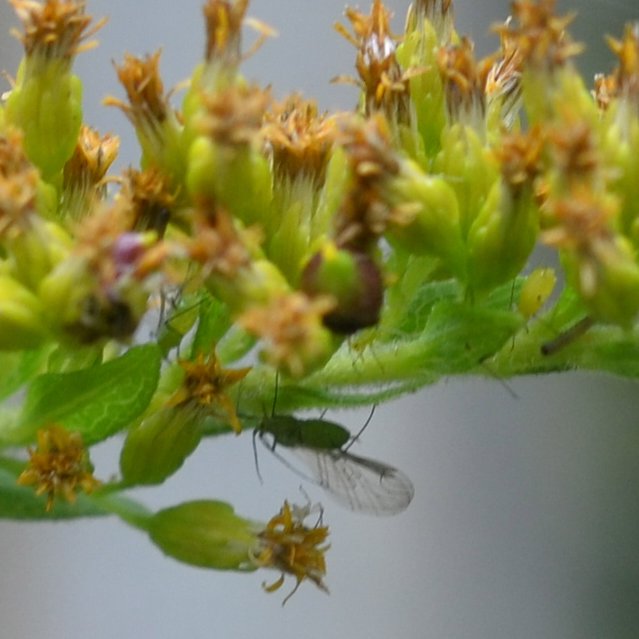
Here's a view right down onto a central pink aster head about to open, so that the leaves seem to form a large flower with green petals. This light purple aster is especially precious to the honey bees (Don't miss the one on the bottom-most blossom). A small bumblebee makes itself comfortable in the light pink asters out back.
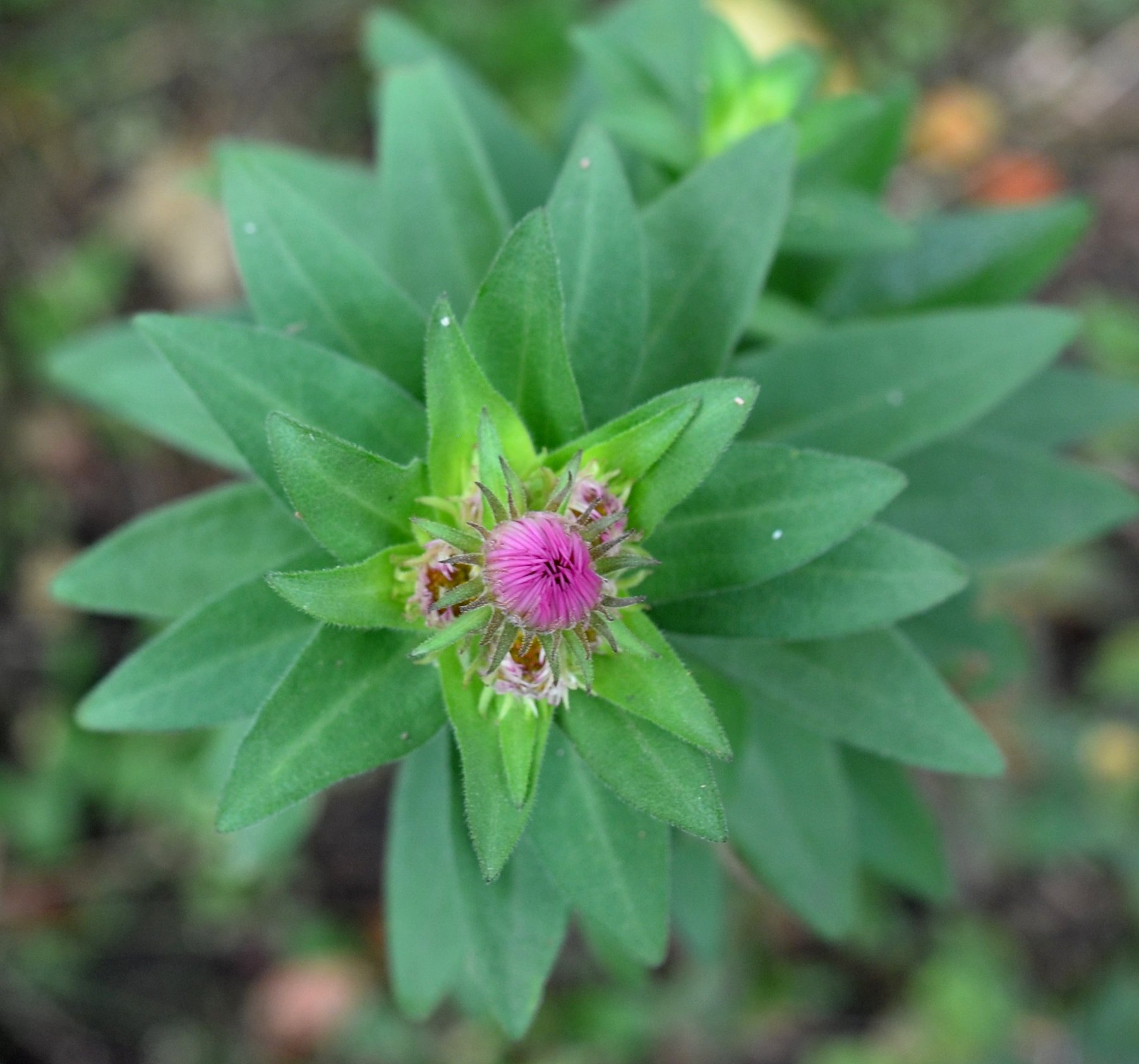

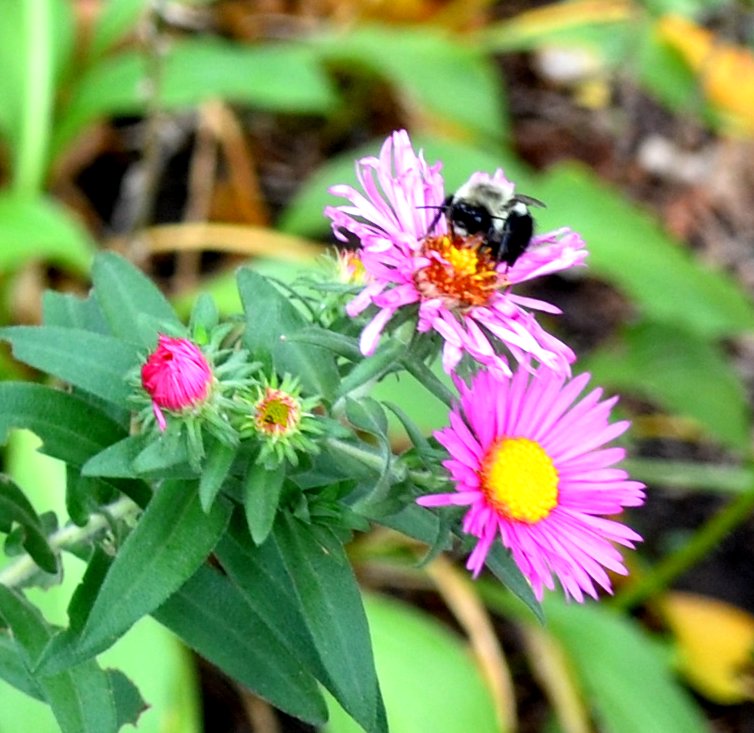
Another bumble bee. Quick quiz: Which character in Harry Potter (1-7) is named after the UK word for a bumble bee? Another. Another. The problem with identifying bumblebees is that often the colors and fluffiness carry across the whole domain of bumblism.

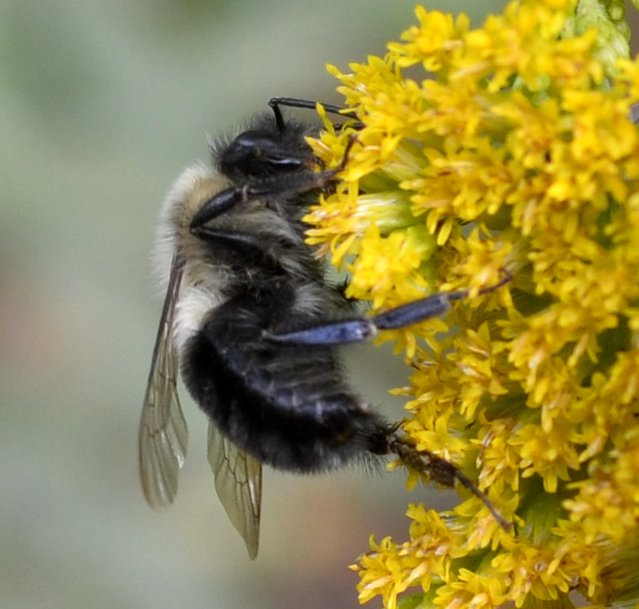
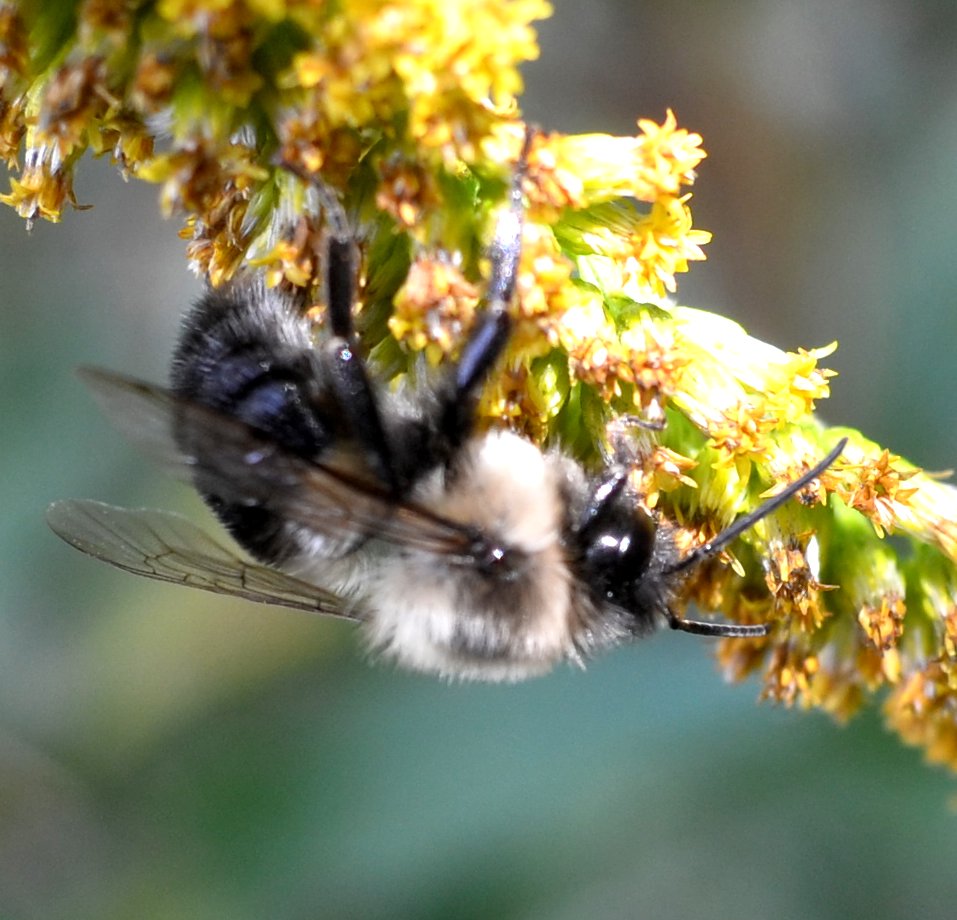
Honey bees are extremely fond of aster nectar. This little greyish bee was on the shop siding. And this tiny metallic bee as well.
.jpg)

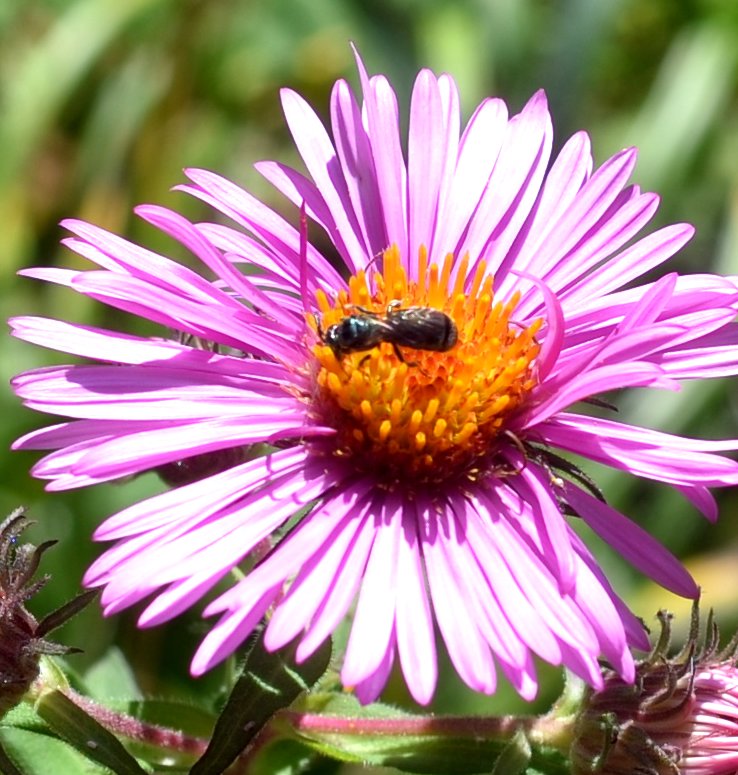
This bee seems to be darkest blue, or is it bluish-black? Image #2 is apparently a different kind of metallic blue bee. The next two images are of the same creature, which is aiming to be a bumble bee, but who knows what?
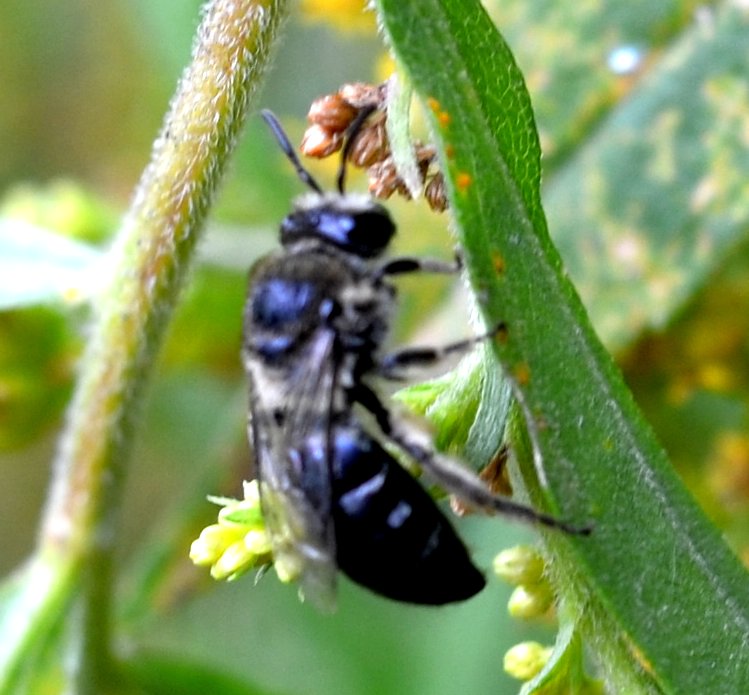
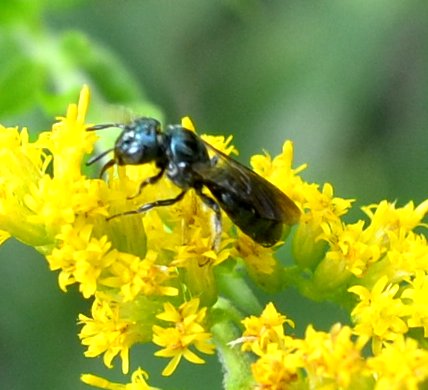
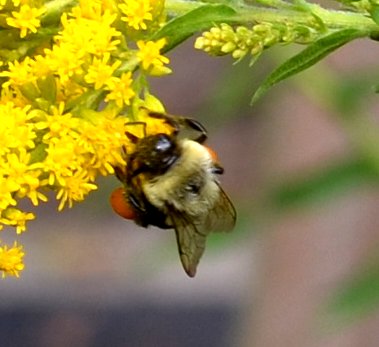
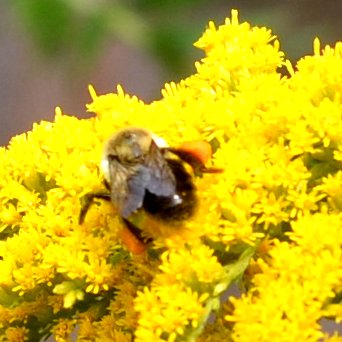
This bright royal blue beetle (two images) was the first and only one of its color and shape that I've ever seen. Too bad it dove under a goldenrod flower just as I clicked. The Locust Borer Beetles are disappearing as the goldenrod passes its prime.
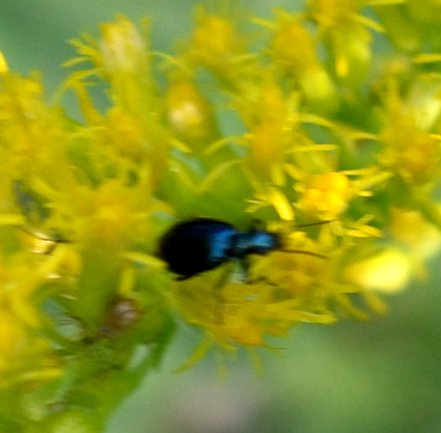
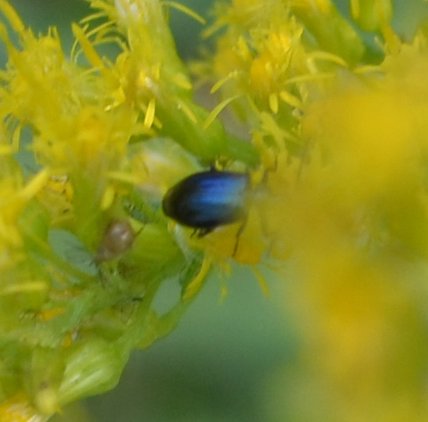
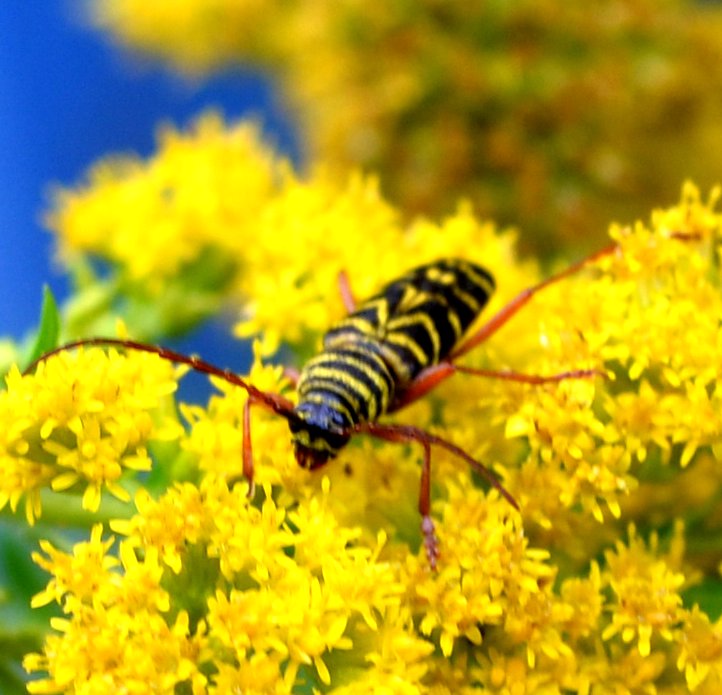
This Goldenrod Soldier Beetle (two images) was set to enjoy the goldenrod's final bright flowers. I'm usually most likely to find these beetles in Black-eyed Susans, but since the latter was rather shy this summer, even in the Goldenrod. But this fine Assassin Bug was hungrily patrolling the golden stuff, while a couple of aphids distractedly munch on this plant.

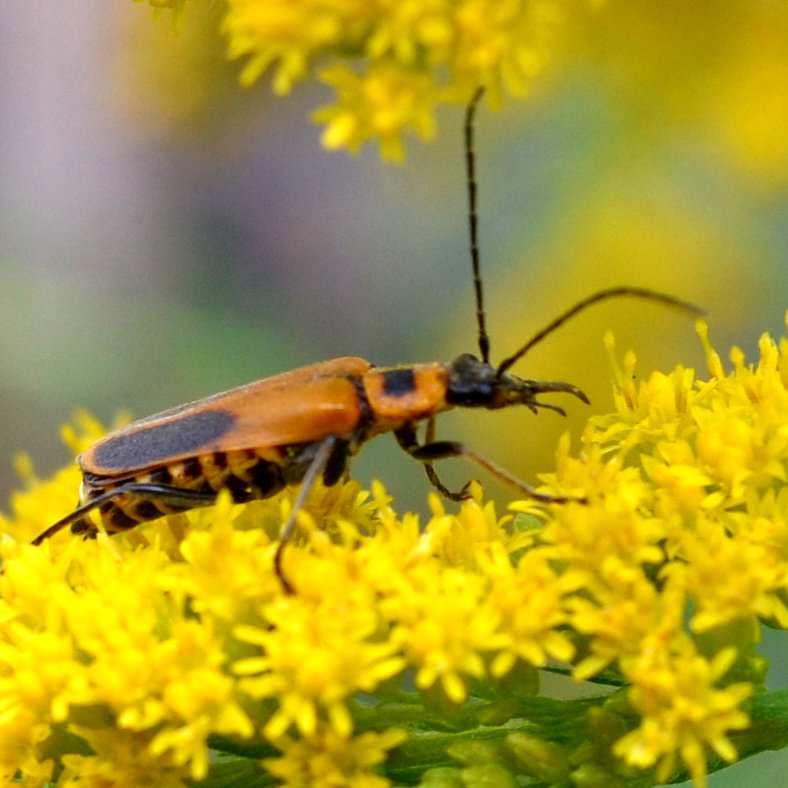
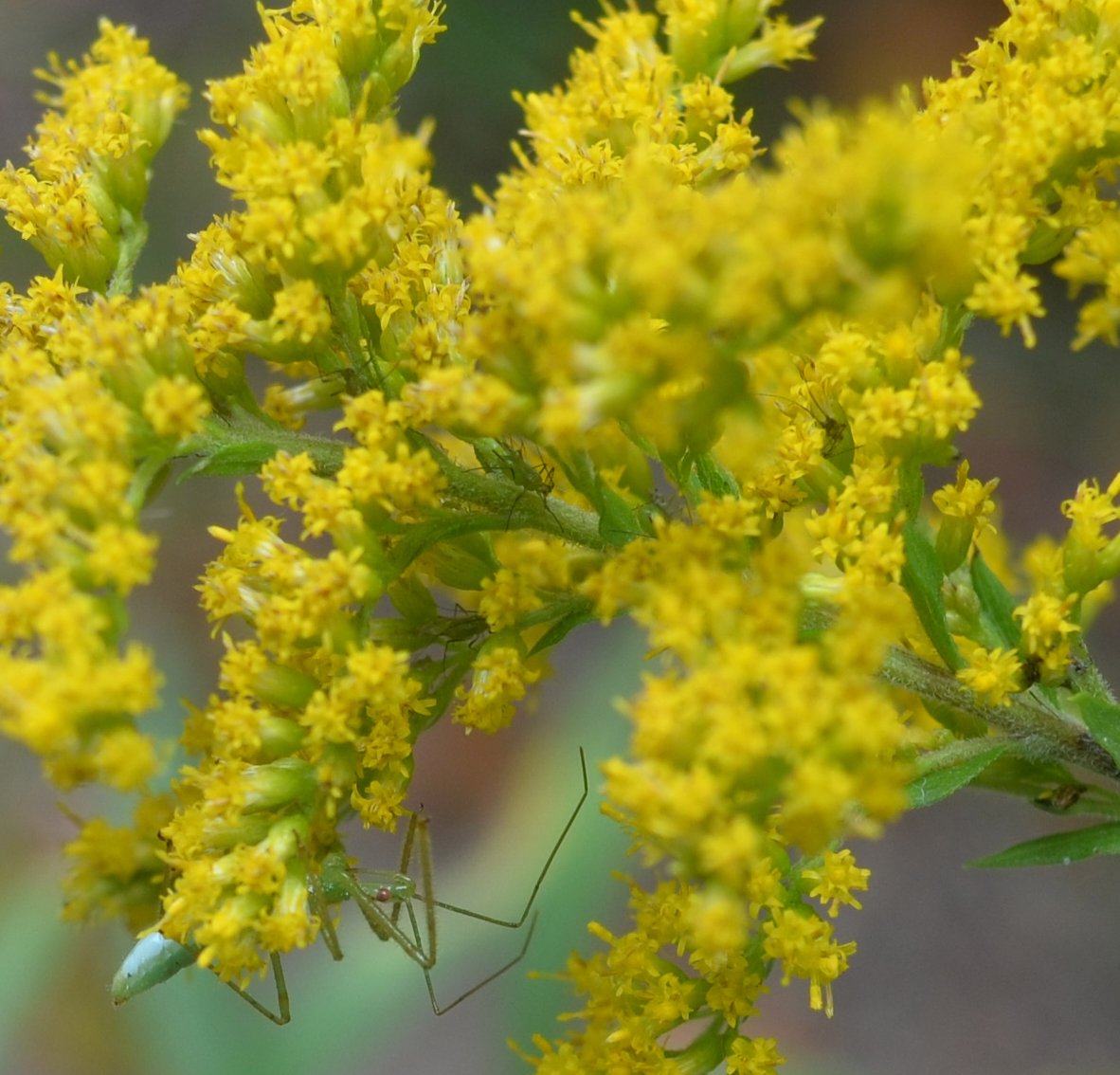
Another assassin bug was looking in the right place for Crane Flies. Here is one happily devouring one on the shop siding.
And here are two sometimes confused bugs: the Boxelder Bug and a Small Milkweed Bug.
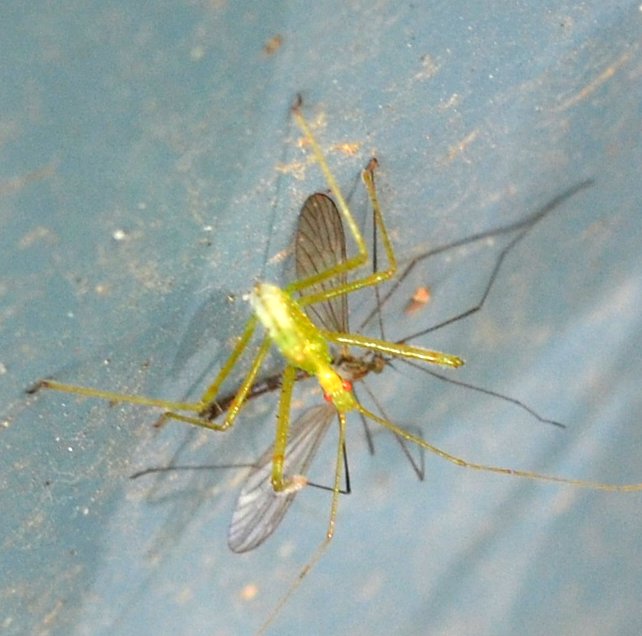

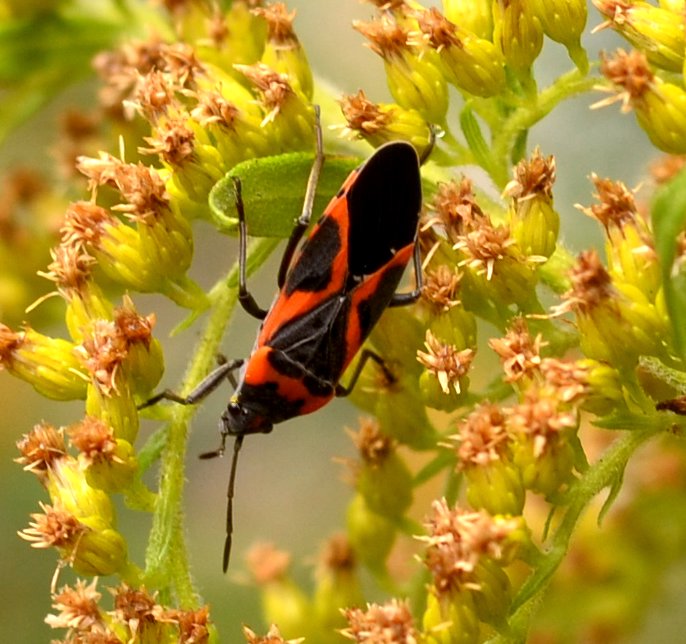
There were also a few (actually, three) leafhoppers. The first was almost white but we managed to play with the contrast and light to get some of the colors to come out. Second, one we have seen often - a polka-dot one. And finally, an almost perfectly lime green leafhopper!
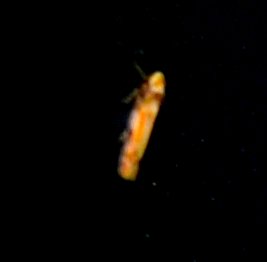
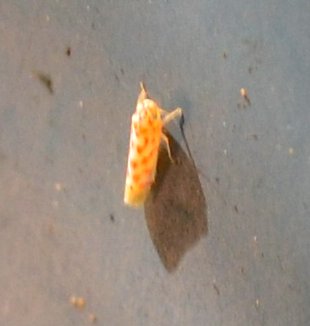
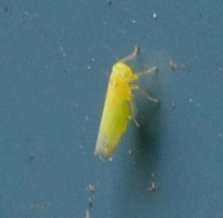
Here is a rather larger Lygus than I'm used to seeing now. Then, what seems to be two kinds of stilt bug, or rather two kinds of lighting.
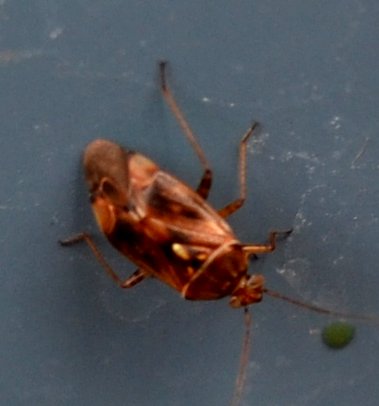
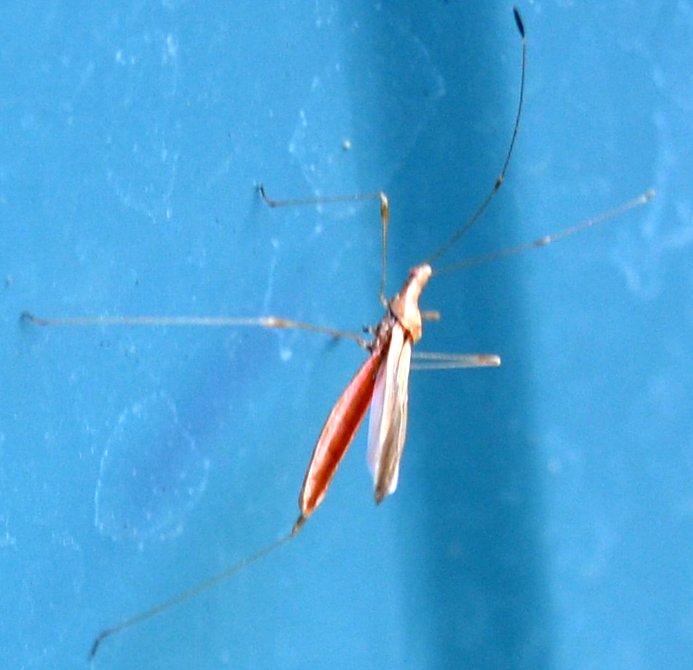

Some stink bugs (I think). The first one is a lot like the reddish one we're used to seeing and which did appear this week. I love the subtle colors. But look at the brown marmolated stinker - it is also a lovely mosaic. You can't tell the good guys from the bad guys by their expertise in lookin' good. I still think this last one is a nymphal CBMSB. But keep an open mind - maybe it will turn out different The last one is taken from above, but if you think about the camel-like treehoppers that love thistles, it has a similar dorsal view. Just think!
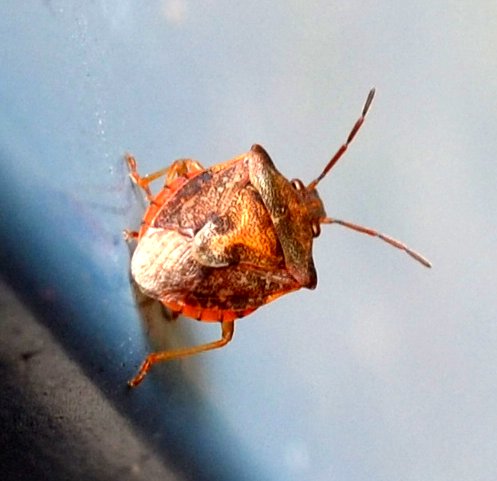
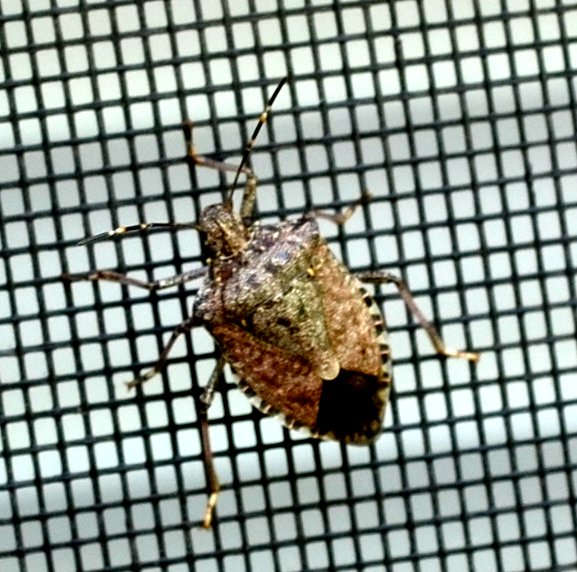
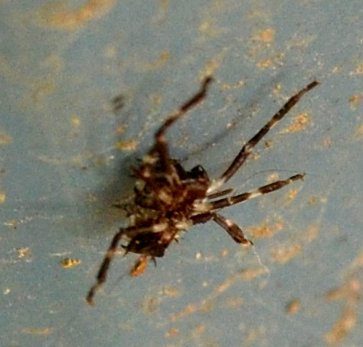
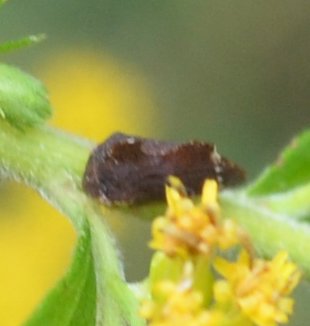
Well, if I were going to go by the spelling of the order of these insects, etc., I would put the crickets up in the O's for Orthoptera (straight wings) but today I plan to put them after bugs, since cricket comes after bugs. The first two are probably Jumping Bush Crickets, and it's ok if I assume that because this is the one brown cricket that visits each year, or for the last three or four years. The green one is a Tree Cricket and I believe that last year (the first time I saw one) it was actually a Pine Tree Cricket. That makes sense because of the big blue spruce out behind the woodshop.
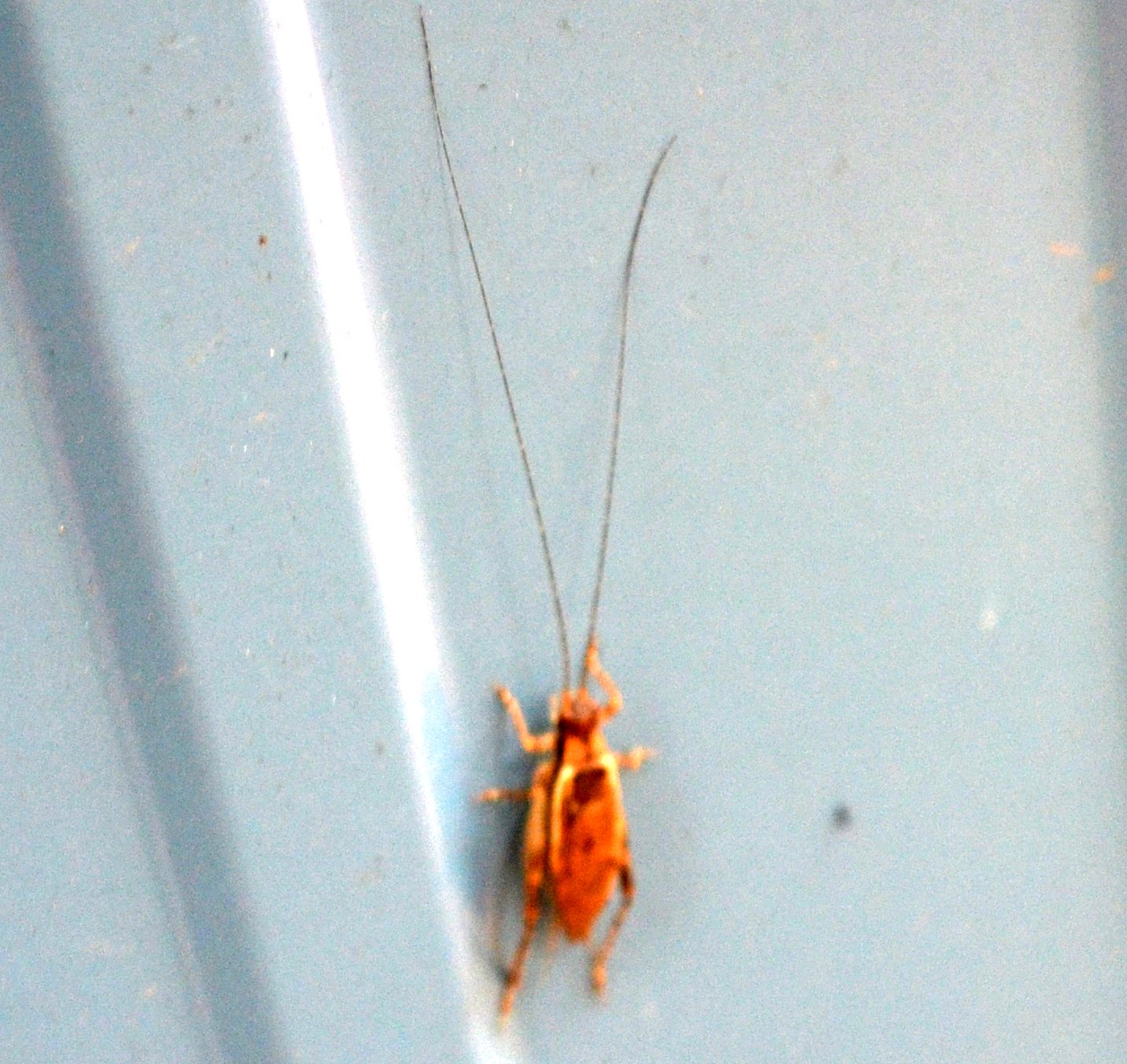
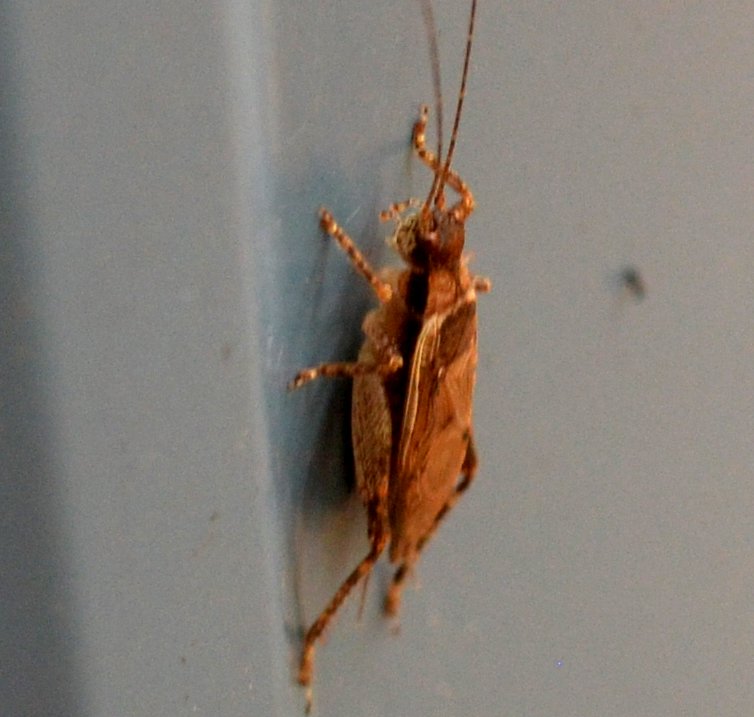
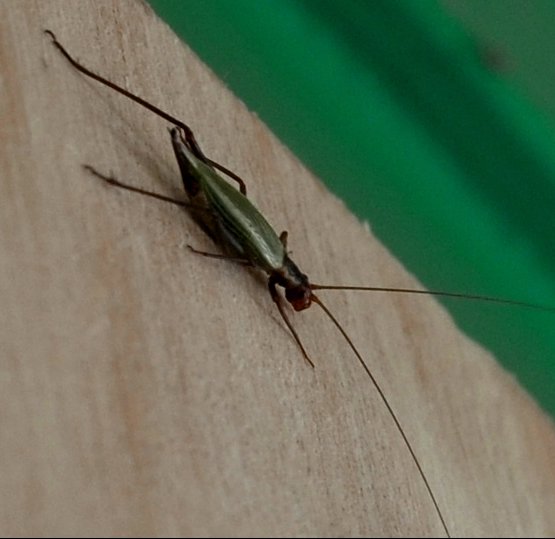

The first and second images have two other different crane flies. This one seemed to be looking for something to do, while the next one reminds me so much of a gall midge from earlier in the spring. Last is a side view of a hover fly of some kind. You can tell it's a hover fly because it was hovering in space. You can tell it's a girl because of all the space between the eyes.
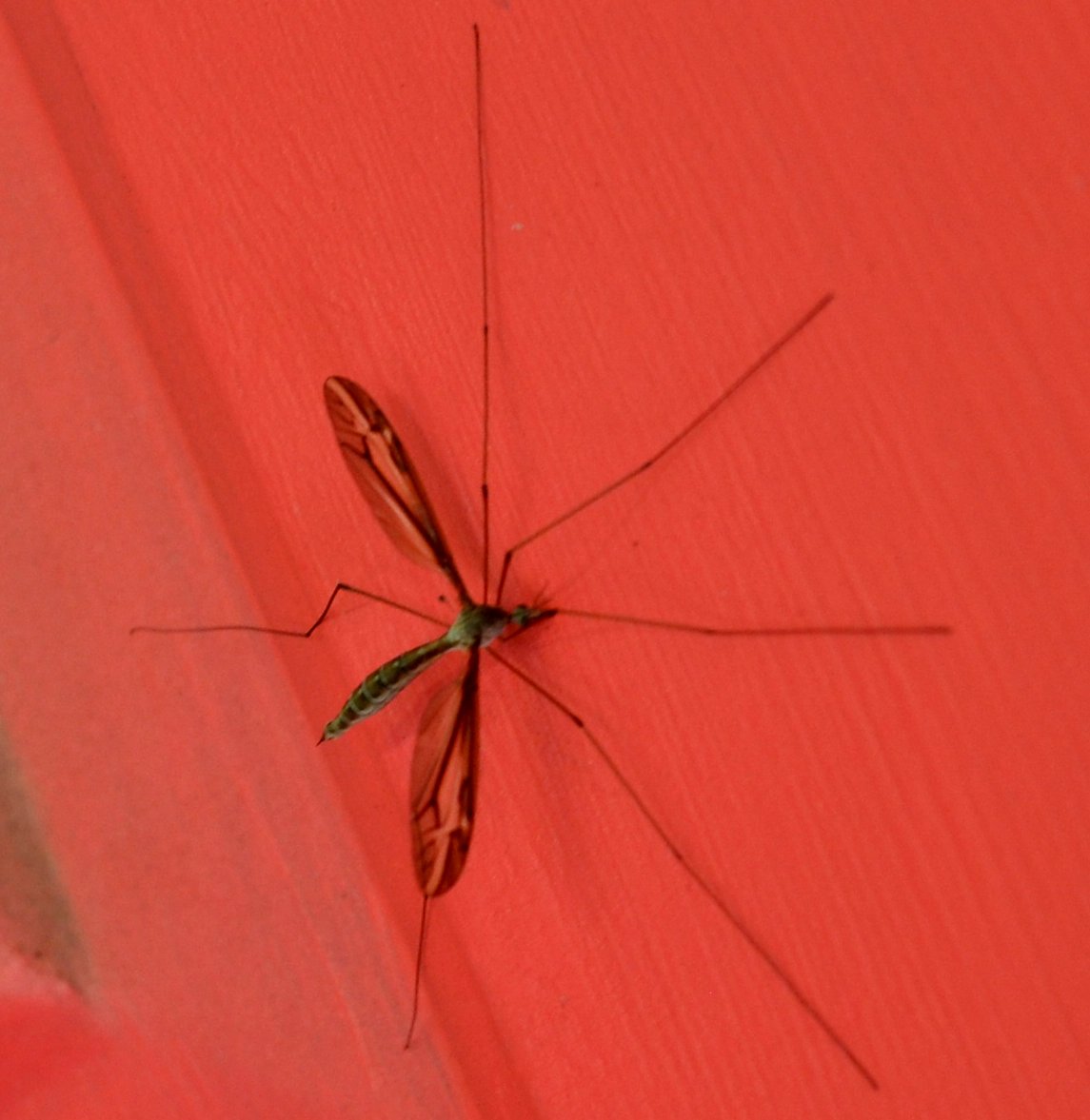
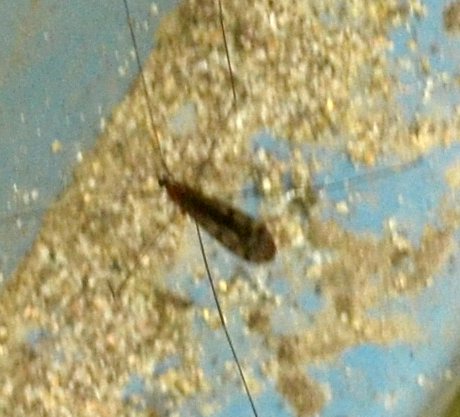
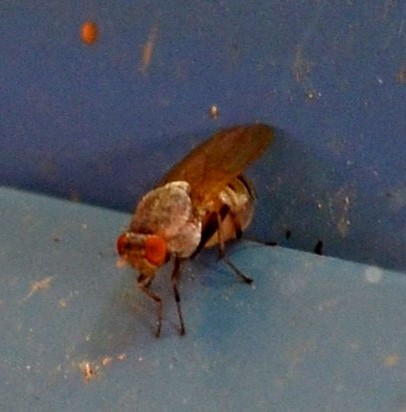
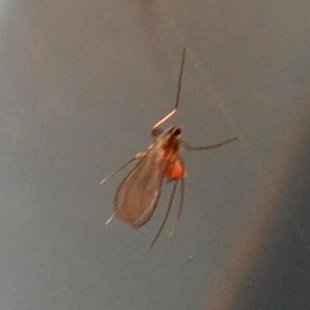
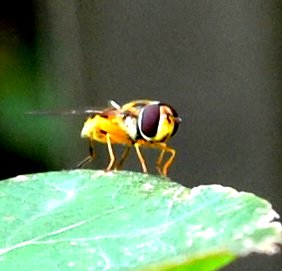
Here is a long-legged fly from the back of the shop; then a moth fly; then a Tachinid fly, one of the hairiest genera of flies.
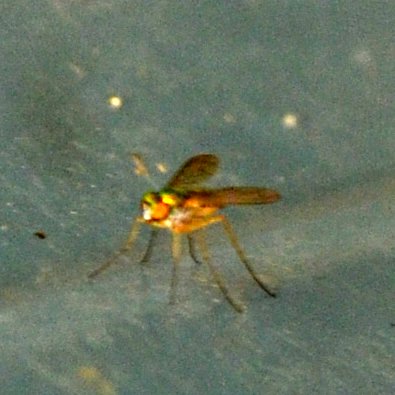
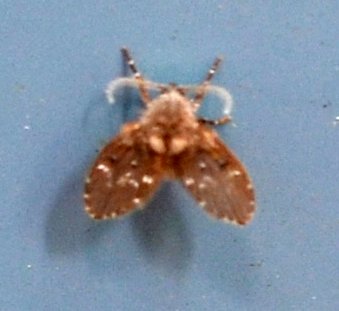
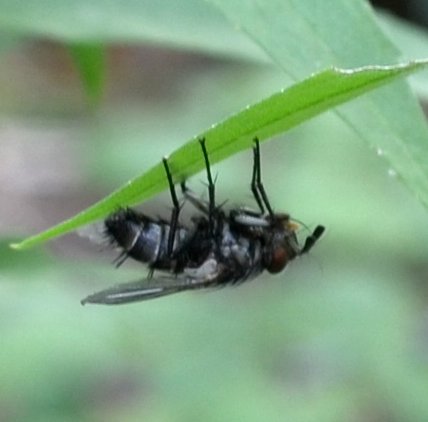
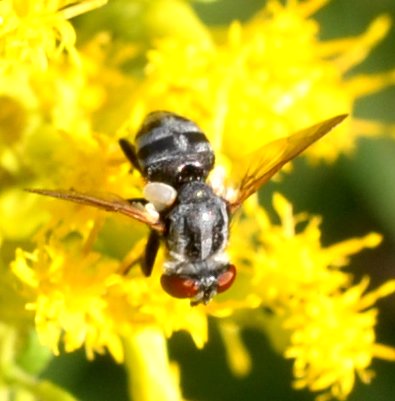
Was that all the flies? What has happened to the universe? But cheer up, Froggy made a lovely appearance the other day. He cautiously let me step around him to shoot something else. When I turned around, he/she suddenly turned from the pond edge and into the grass. This is the last shot I have of him/her. But a day later, As I was creeping around the pond, I heard what sounded like "Grumph", much like the sound my old frog used to make to mean "hello, howzit?" and a bunch of other starters. I grumphed back and he/she grumphed back, for a total of about 5 interchanges. Since the rule of thumb is that talking frogs are usually males, maybe this edges him/her back toward the male side. Looking again at the eye-eardrum proportion, it does seem quite possible that the eardrum has a larger radius to eye ratio. So maybe, just maybe, have a friend who will reappear next year. Meantime, almost every day I find myself stepping onto or almost onto one of the baby toads. I wonder, did the three or four broods just keep following themselves? Hard to make your mind say, Look, they have always done the same - a few weeks of tadpoles growing and then a few days of froggifying themselves. I just hope I'm not stepping on more of them than were born, and that enough of them avoid my big feet to make a new generation in the yard - but then the other day, in another part of the garden A two-inch toad leapt from under the foot and hopped off under more brush.
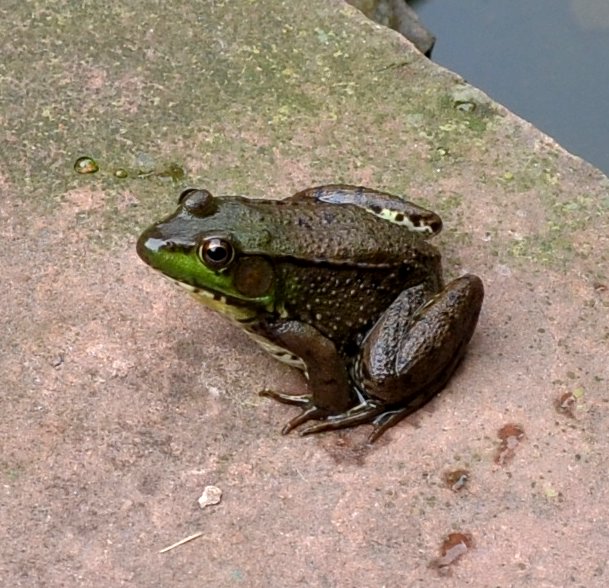
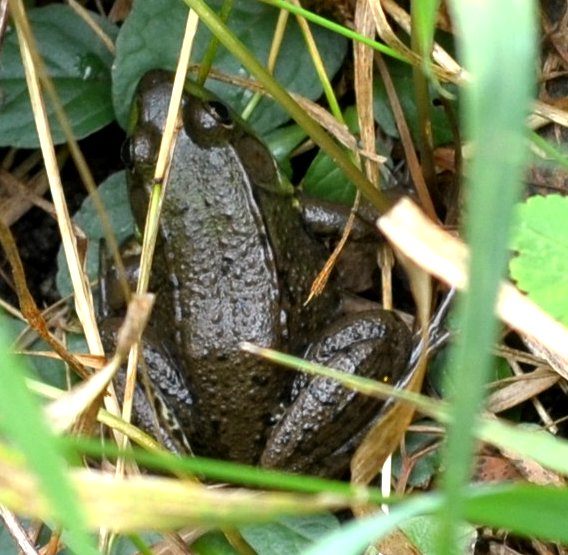
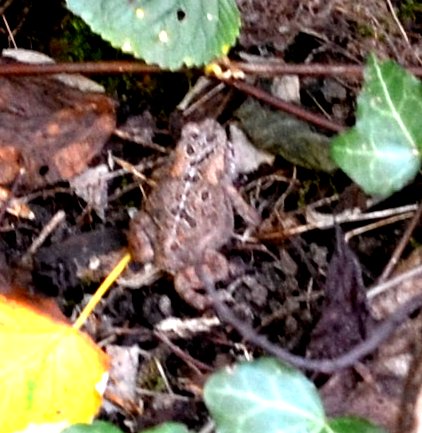
Here are some harvestmen. Their predominant color these days is red/black. It has been quite a time since I saw another color combo.
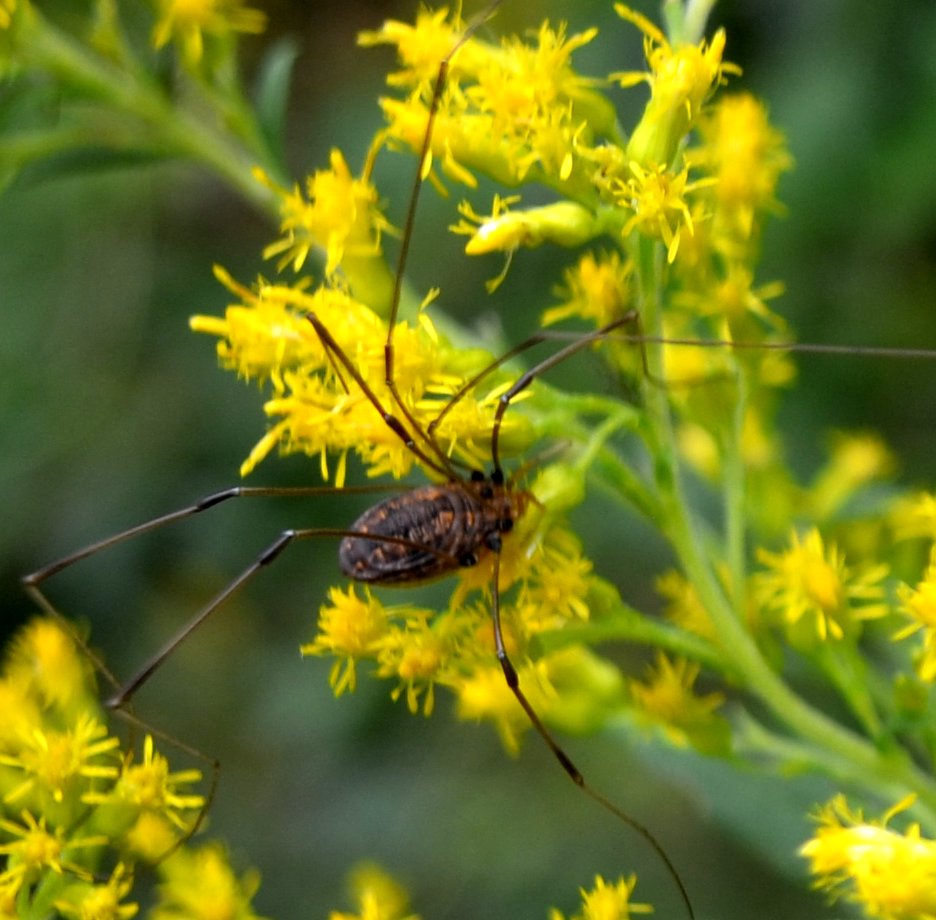
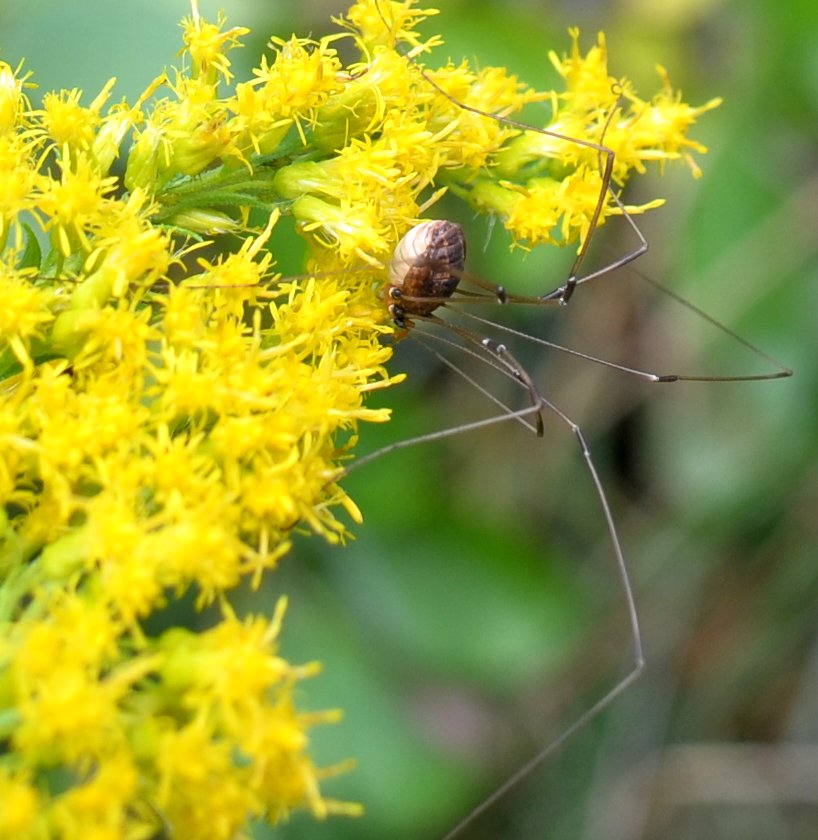
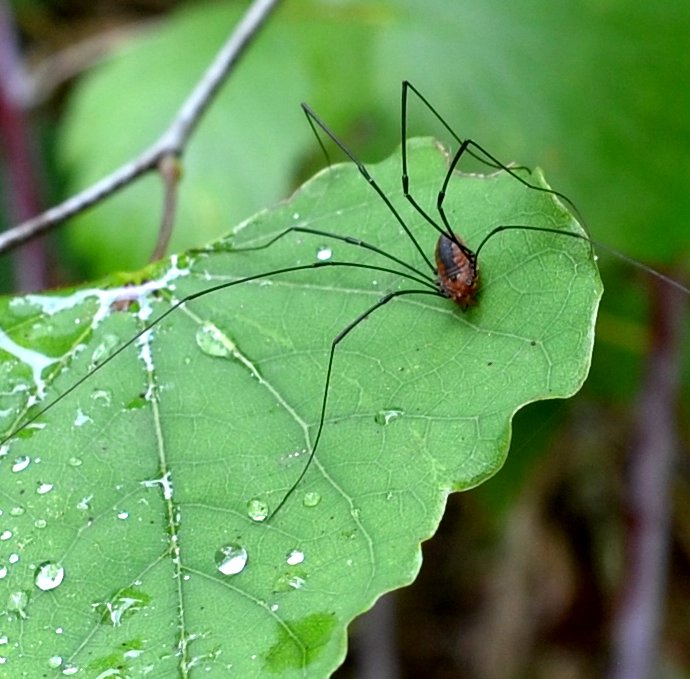
We haven't seen a lacewing for some time, but here is a brown one in a bit too much of a dark area. Next is a moth we have frequently seen. And another, one that I've suspected was a moth but wasn't able to get a good clear picture of it.
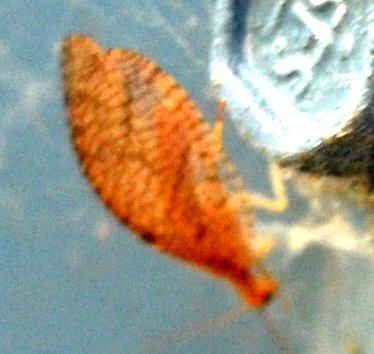
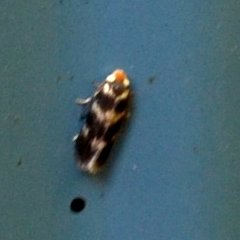
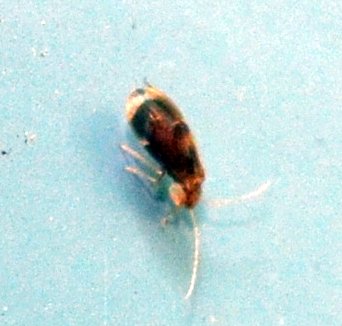
Would you like another glance at the flowers and other colorful creations out here? This aster plant has purplish leaves, probably because it volunteered in a flower pot and thus isn't as well-watered as one planted in soil. Its flowers are also purplish-pink. The second is the one that volunteered right up against the deck railing. This colchicum surprised me as it is a second flower off the same original bulb, and thus enlarges the enjoyment time!
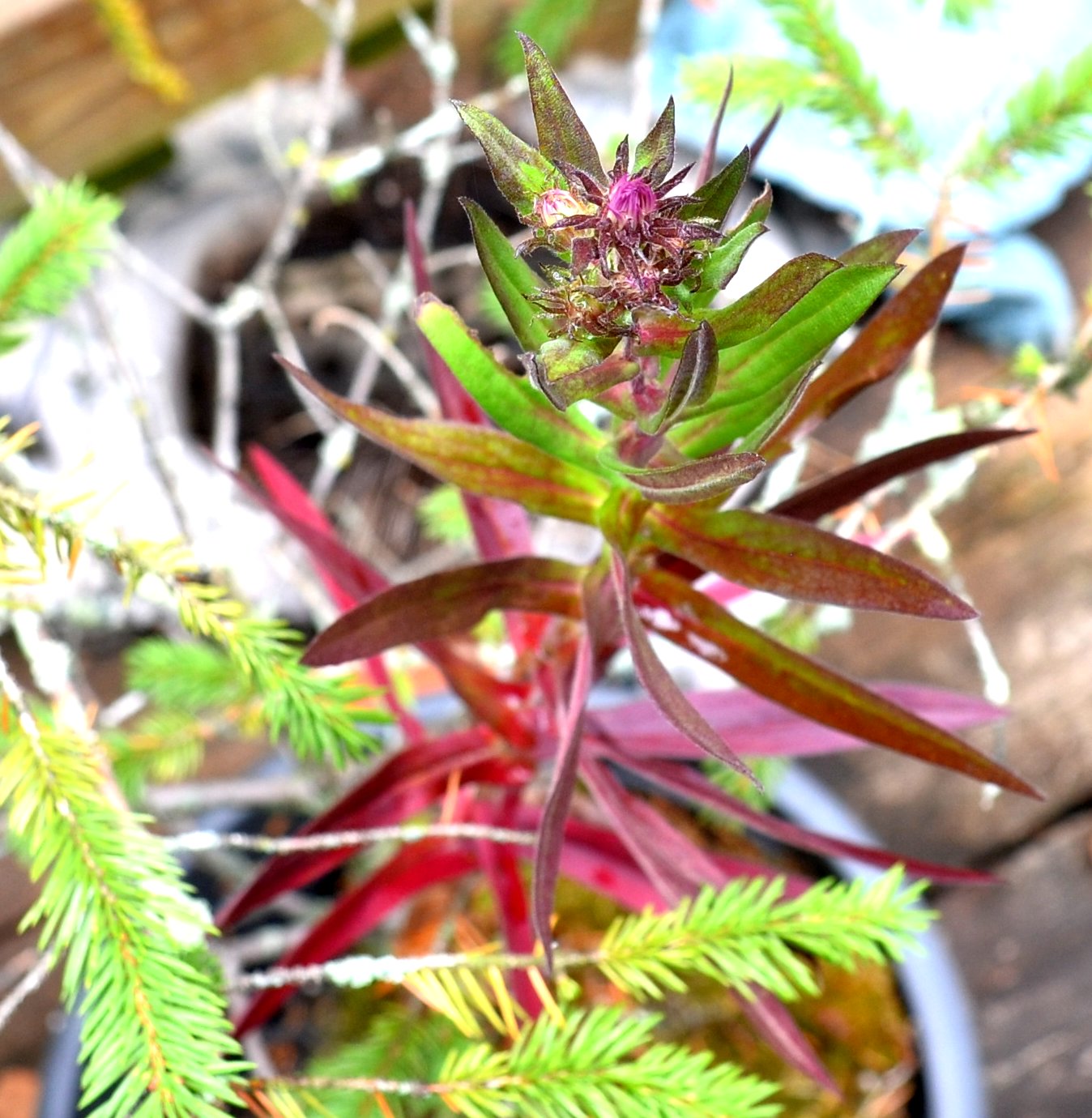
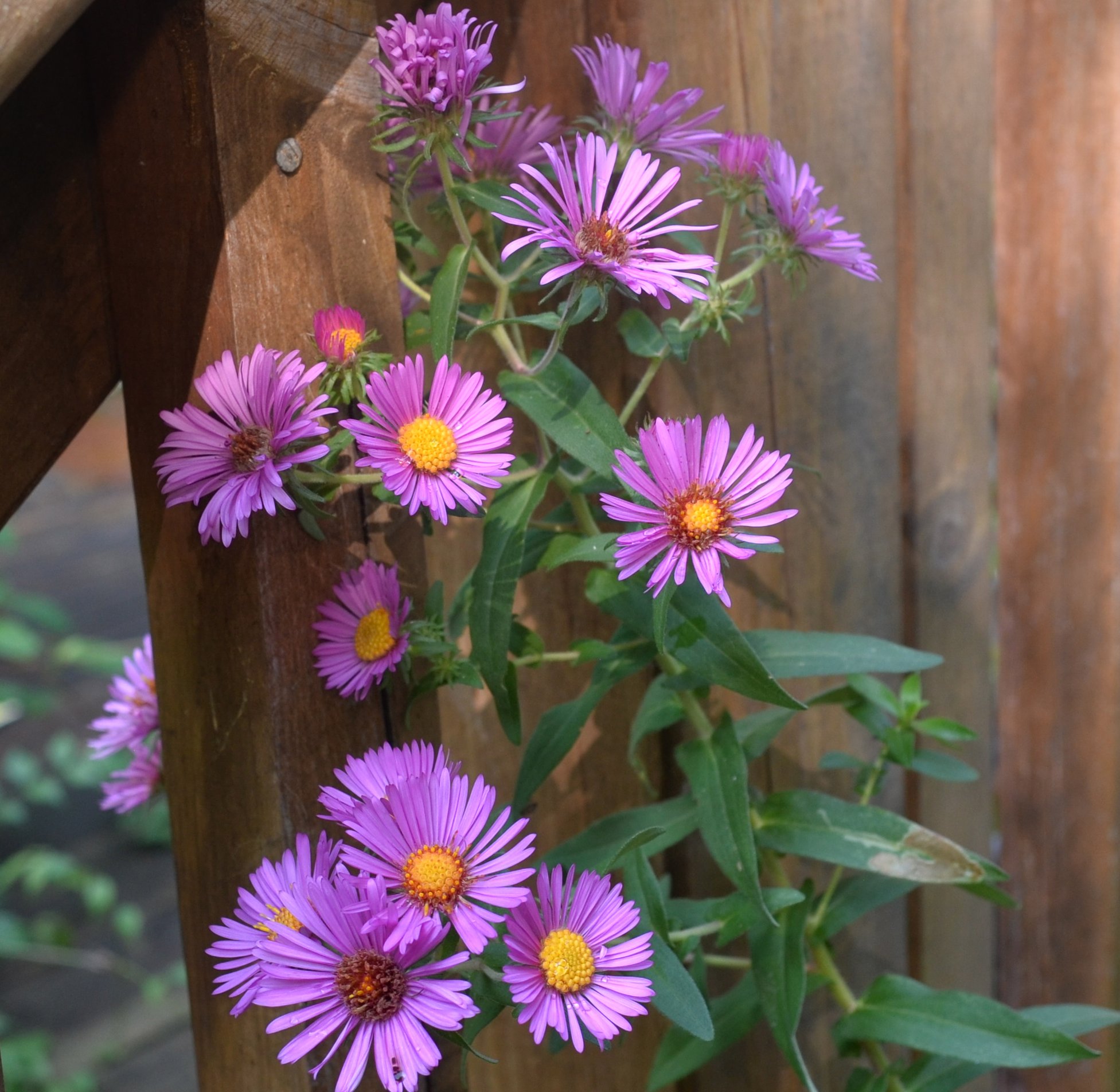
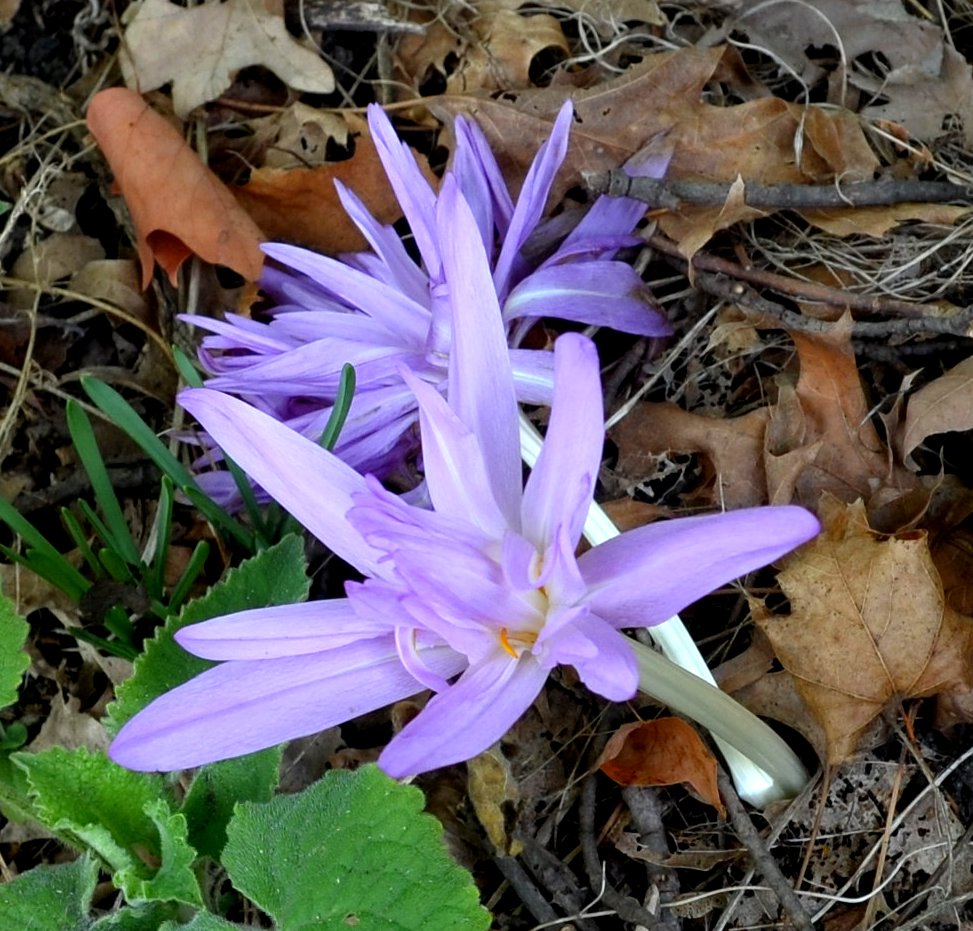
Here is my favorite daylily, August Orange, which expanded its season into September this year. Then out back by the pond, the purplish asters bloom and almost float on top of the pond with its lovely pink lilies. And the pink Japanese anemones are still making this wild place into more of a boutique.
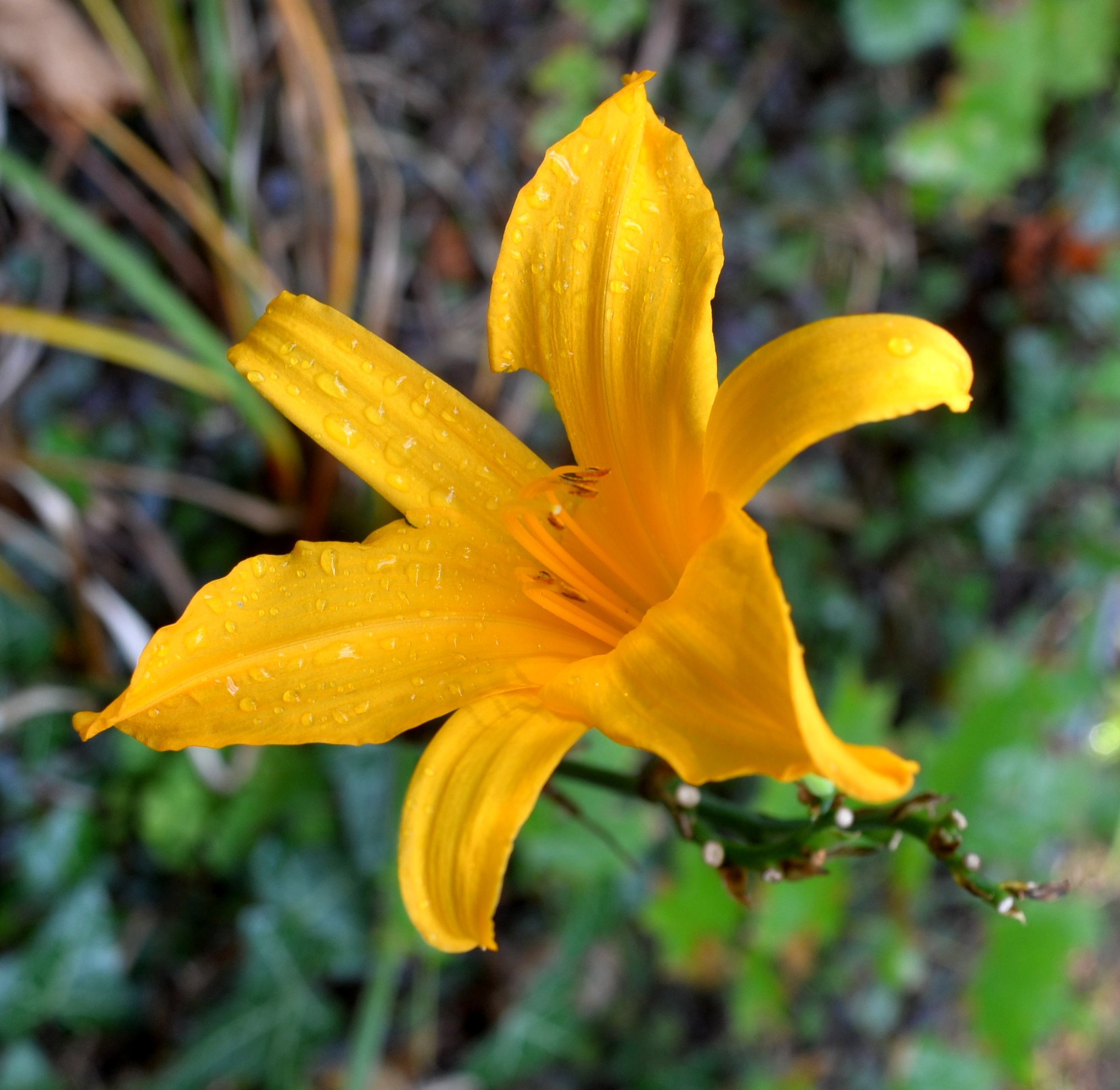
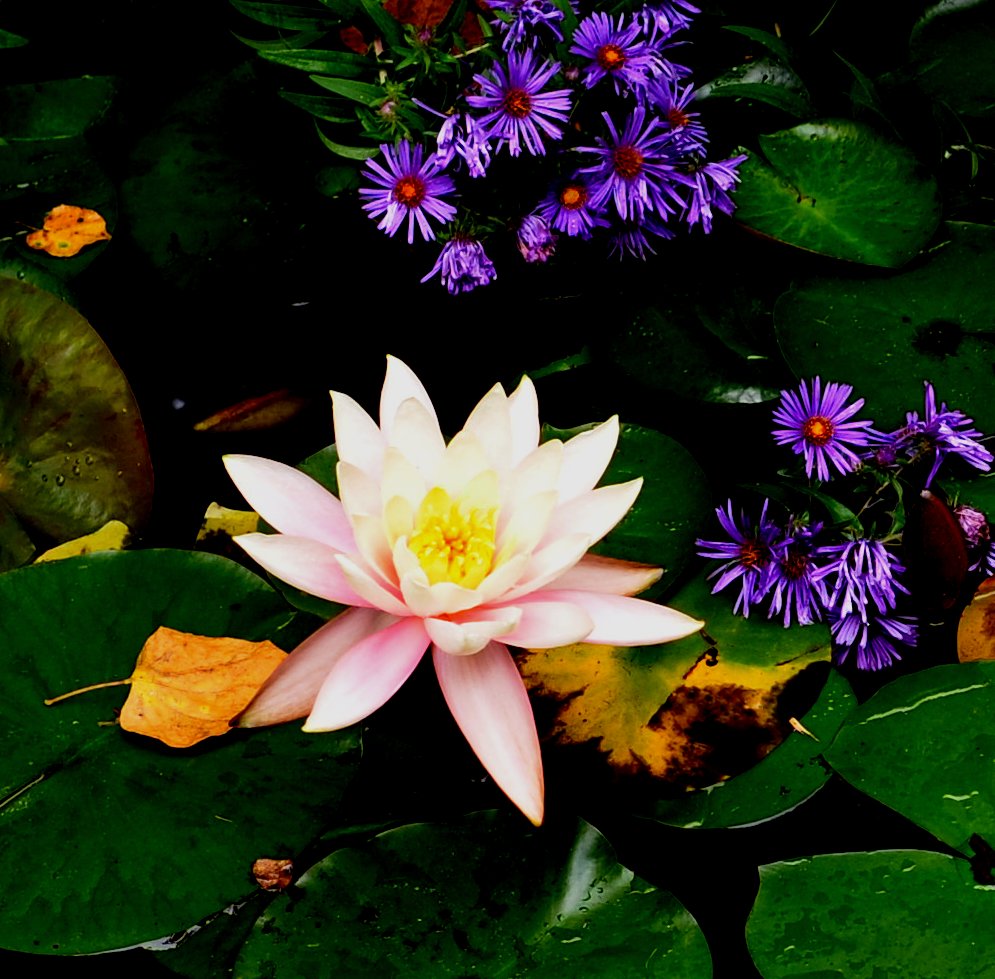


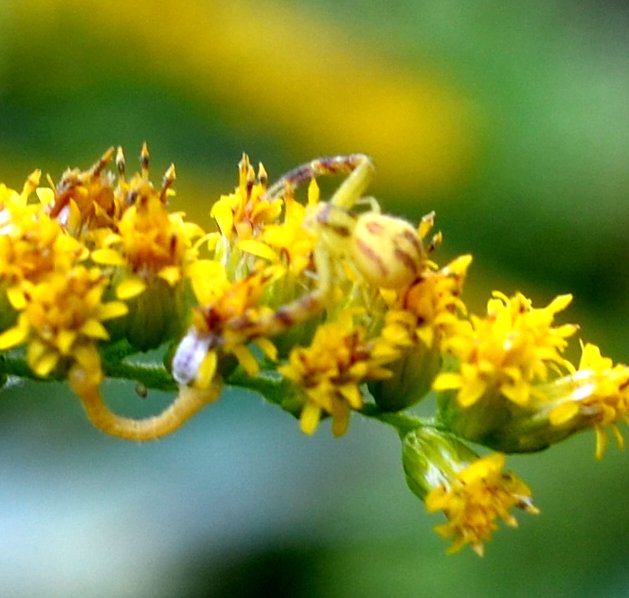


Here are a Grass Spider and two Jumping Spiders. The jumping spiders are the ones with the enormous headlight eyes. They are incredibly beautiful even though there are so many confusing specimens.
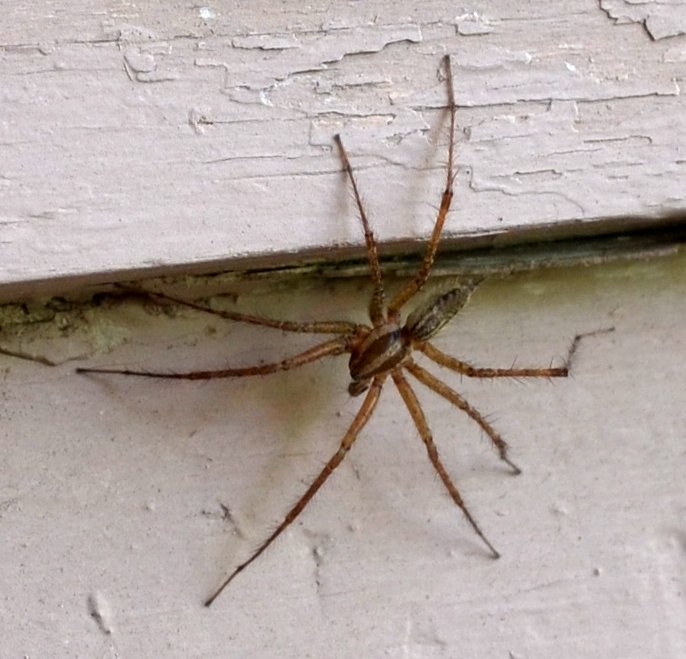


This may be our good-bye to the little wasps that come with the goldenrod and leave when it isn't yellow anymore.
A bee wolf searches for bees in the goldenrod. Front view and dorsal. The third little wasp is one of the Cerceris genus, probably Cerceris clypeata. I'm going by the two vertical yellow stripes on the face.
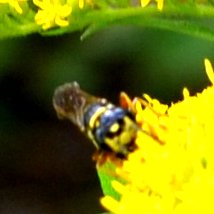
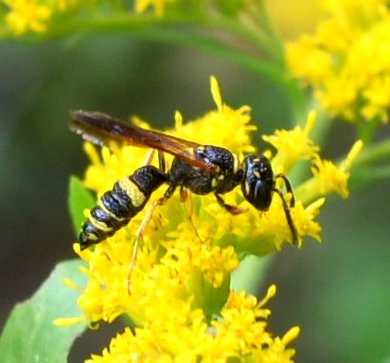
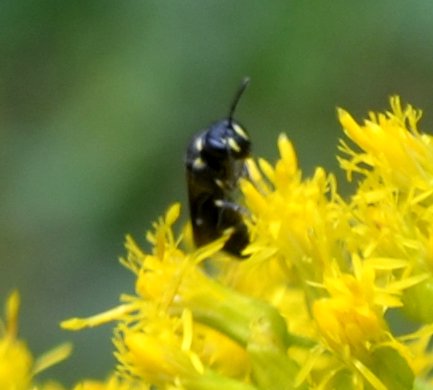
The Chalcid wasp, Leucopsis affinis, that we discovered last week stayed around for the last great Goldenrod harvest. And this little fellow with the white diagonal marks on its face turned out to be another species of Ectemnius, this time it's E. continuus.
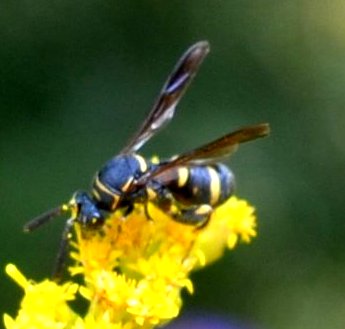
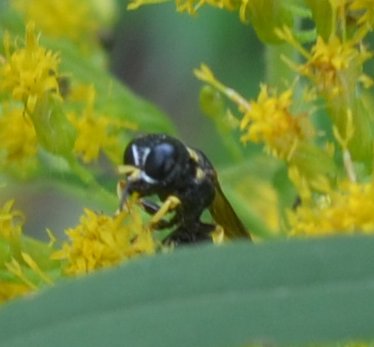
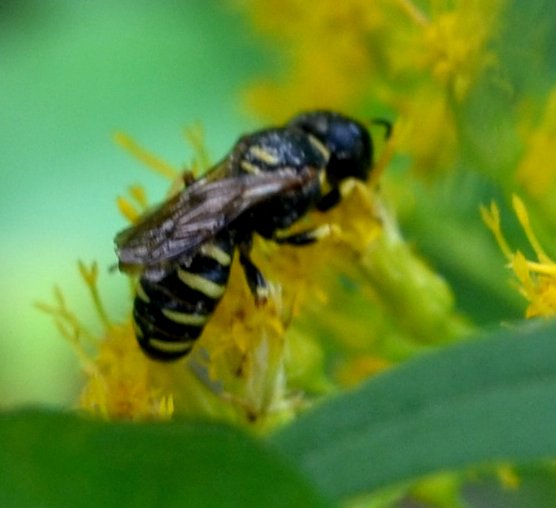
The beautiful elegant Northern Paper Wasps have pretty much dropped off the face of the earth (here, at least). But we still could attract a few Eumenes fraternus, and whatever this little mystery is. It rather looks like an Ancistrocerus.
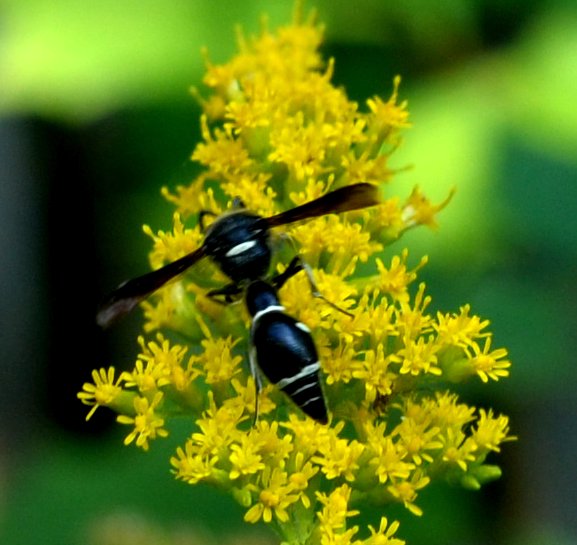

Let's end with a couple of "are-they-wasps-or-are-they-winged-ants?" examples. This first one looks like a winged ant.
Images 2 and 3 are another kind, abut also probably winged ants.
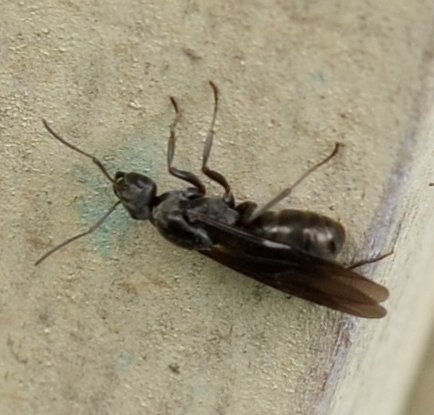
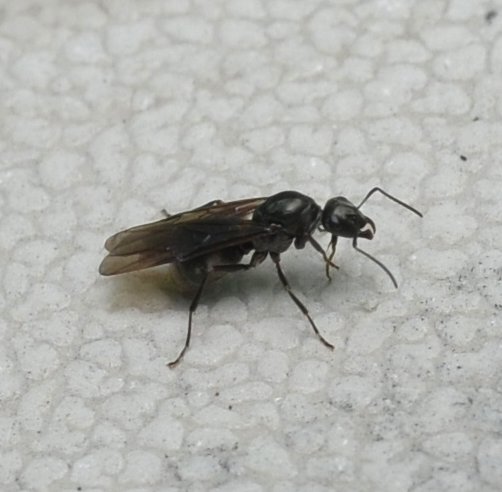
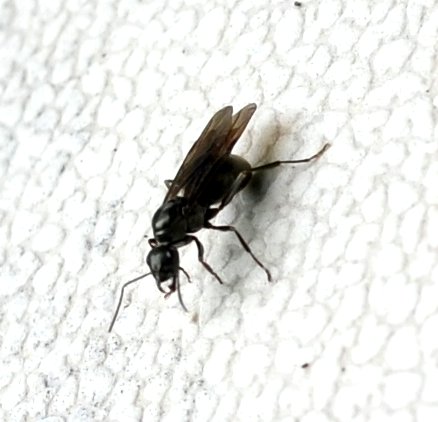
Another one. I submitted all three of these to iNaturalist.org and fellow naturalists agree that all three of these are in fact ants. I had never seen winged ants in the fall but apparently some kinds of ants do it in the spring and others in the fall.
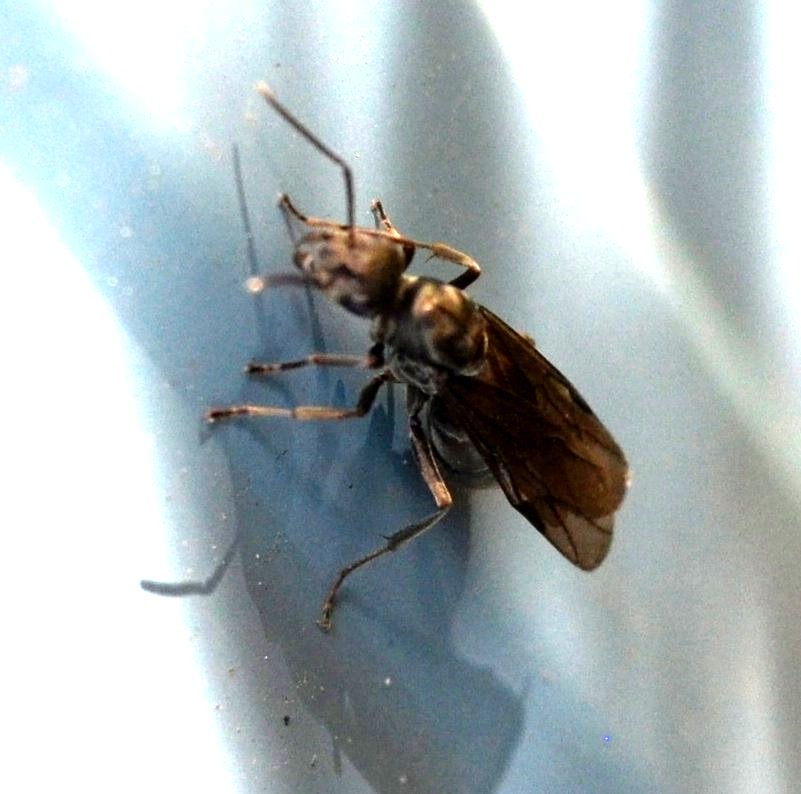
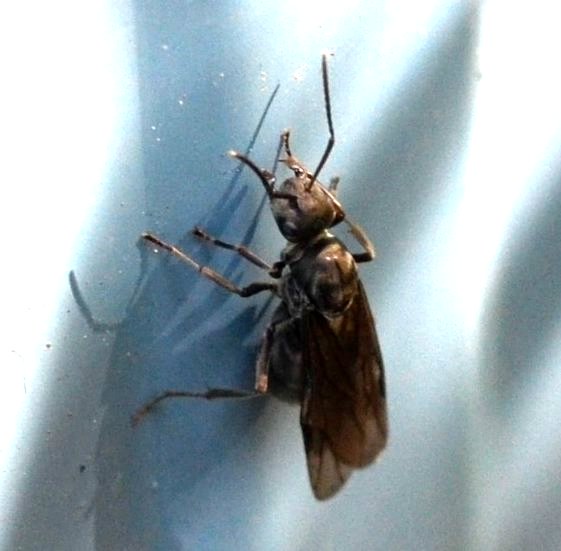
A strange little thing (wasp, ichneumon, etc.) landed on a mauve aster bud. At first its wings surprised me by disappearing. They must have been fluttering them so fast they seemed to disappear. I would love to get an ID on this one.

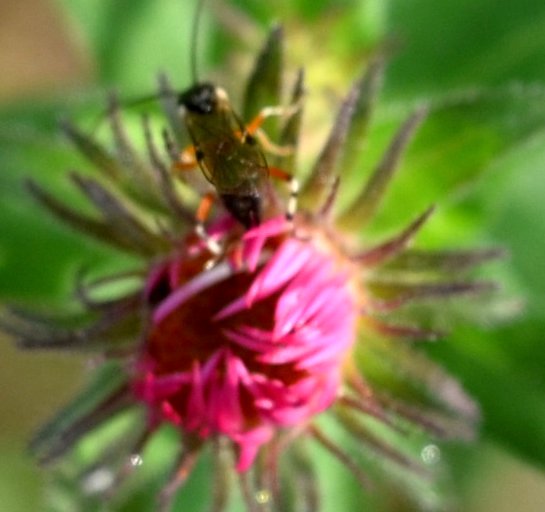
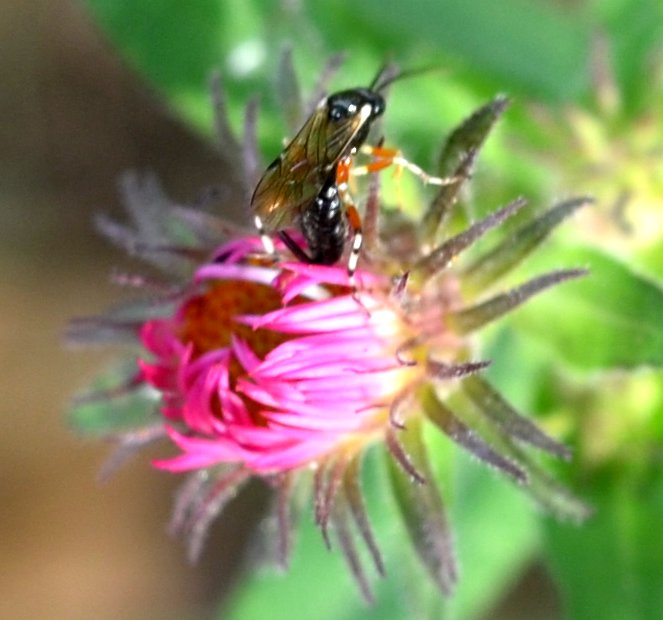
They say we might have nicer weather by about Wednesday. I didn't get to spend much time outdoors the last couple of days because of the heat and humidity. We'll be back next week. Let's hope we can still have a few weeks to look around for new or old and already beloved things.
Love, Martha
Back to September 17, 2017
Forward to October 1, 2017
Back to 2017 menu
Back to main menu
copyright Martha O'Kennon 2017















.jpg)











































































